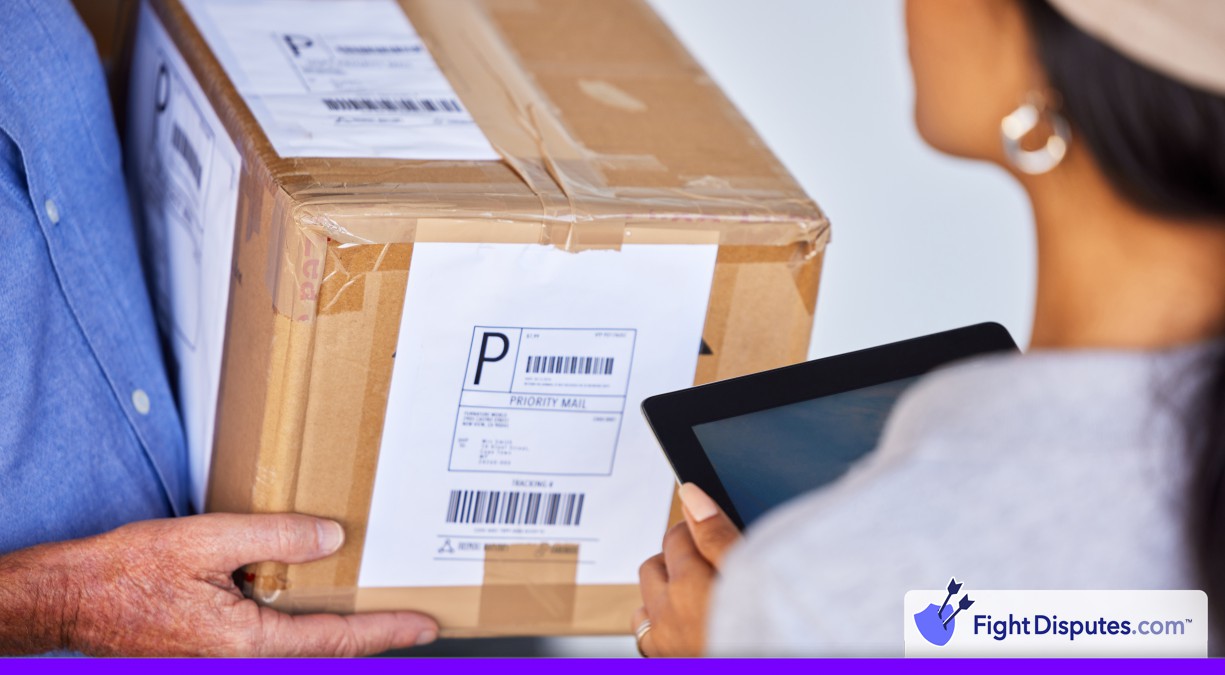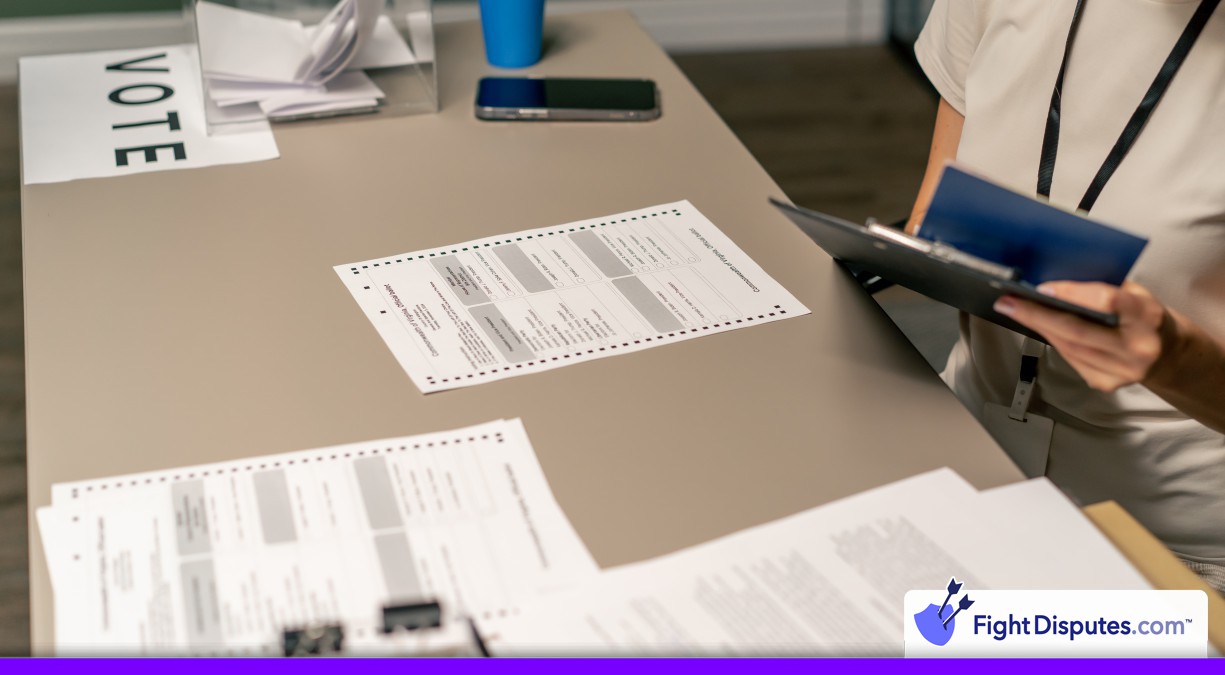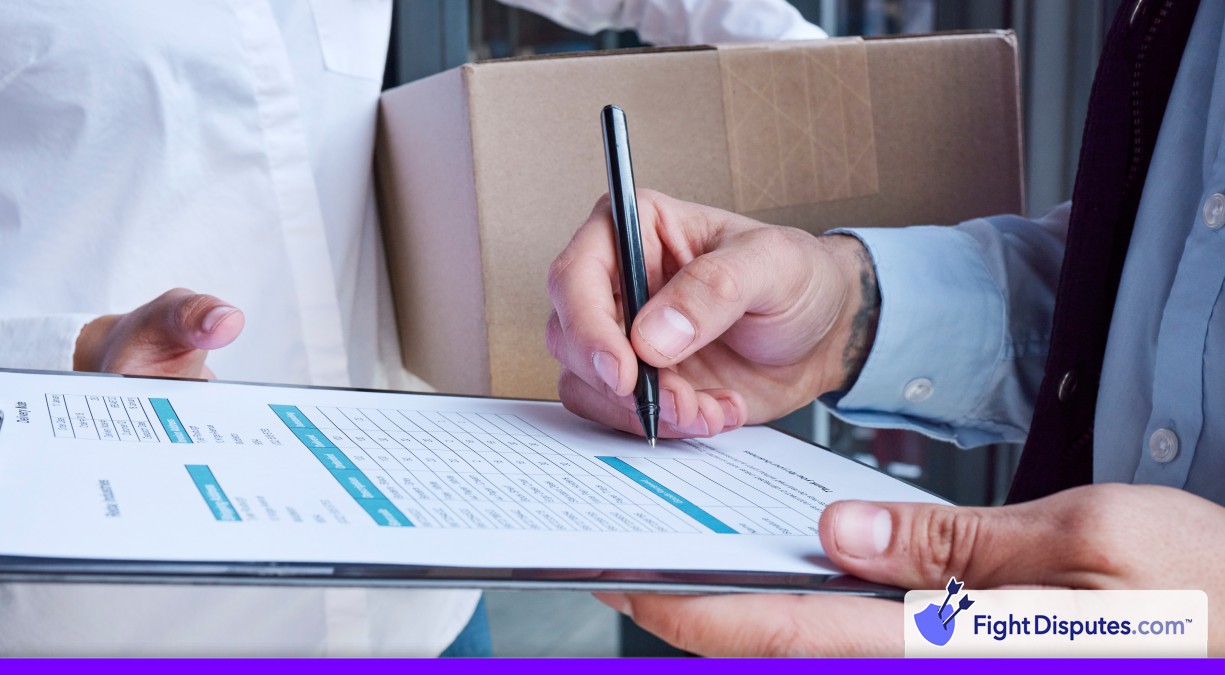What is a Partial Chargeback?
Partial chargebacks work just like you’d expect from the name – they happen when a customer disputes only part of a transaction instead of the whole order amount. Say a customer places an order worth $100. When the package arrives, one item out of a few is damaged or defective, instead of disputing the full $100, they might choose to request just $20 back to cover that one problem item. The upside for the merchant is that they get to hold onto $80 of the sale instead of losing the entire $100 if the customer had disputed the whole transaction.
This might sound like a win compared to a full chargeback – and to be fair, it’s better to keep most of the sale than to lose it all. But there’s an important detail that merchants miss about partial chargebacks. You still wind up paying the same chargeback fee whether the customer disputes $20 or the full $100. That fee can run anywhere from $15 to $100 per dispute, and it adds up fast.
Partial disputes pop up all the time, and they’re especially common with orders that include a few items. A customer orders three shirts, and only 1 reaches their door. They’ll file a partial chargeback for the two that never showed up. The same happens with bundled services, where the main service worked fine, but an add-on failed. Other times, customers will dispute only the shipping fee because their package took much longer than you promised.
What makes partial chargebacks so frustrating is that you still have to put in the same amount of work as you would for a full chargeback. You still need to collect your paperwork and get your case submitted before those tight bank deadlines hit. Miss those deadlines and you’re automatically out of the disputed money, and you’ll still get stuck paying that chargeback fee on top of everything else. Even a pretty small partial chargeback can turn into a headache if you don’t manage it well.
How It Works
A partial chargeback happens when a customer asks for a refund on only part of what they bought instead of the entire order. Say that they paid $150 for an order but are upset only about the $20 shipping fee. After contacting their bank or card company, they have to explain how much they want back and describe why that portion of the payment should be returned.
Once the bank gets the complaint, it decides whether to pull back only the disputed sum, and this is where partial chargebacks can vary from a full one. Instead of undoing the whole transaction, the bank leaves most of the payment in place and takes back only the amount that’s in question. So if the customer challenges the $20 shipping charge, you, as the merchant, still keep the other $130.

You’ll find out about it through a dispute notice from your payment processor that lists the original sale amount and the part that’s being challenged. A lot of processors show partial disputes differently from full chargebacks in their dashboards, so look carefully because seeing the difference matters when making your reply.
Just as with any chargeback, the disputed money is pulled from your merchant account immediately, and a chargeback fee is added. The annoying part is that this fee is the same if the customer disputes $5 or $500, and it can hurt when the amount in question is small. Once you get the notice, you usually have 7-10 days to collect your proof and put together a strong response.
How it Affects Chargeback Prevention
The math behind this gets pretty ugly once you look closer. Most payment processors will hit you with a flat fee for each chargeback that comes through, and we’re talking about anywhere from $20 to $100 per dispute. So a customer who disputes that $10 item from their $100 order costs you the $10 they disputed and whatever fee your processor tacks on top of that. You’re suddenly looking at $30 or more in losses over what started as a pretty small issue.
That’s why stopping these disputes before they happen beats trying to fight them after the fact. Your product descriptions need to be accurate and specific about what customers will actually receive. Selling bundles or packages with multiple items means that you need to spell out everything that’s included in the deal. Orders that ship in multiple boxes need communication ahead of time, so customers expect that. Send out tracking information for each shipment separately so nobody starts asking where the rest of their order disappeared to.
Some of the most successful merchants I’ve worked with take it a step further and give partial refunds well before customers even think about filing a chargeback. When they see a complaint come in about one damaged item in a bigger order, they refund that part immediately without any hesitation – it might sound weird to hand money back so fast when there’s no obligation at all. But it costs far less than going through a chargeback dispute later. Customers love having their problems fixed faster, and a lot of them become repeat buyers because they remember how well they were treated when something went wrong.
Example Scenarios
Partial chargebacks happen in all sorts of ways, and some of these situations are unusual. Let’s talk about what merchants actually go through.
One clothing store ships out a $150 order with three items. The package reaches the customer’s house. But one item (a $50 sweater) has a big tear in the fabric. Instead of sending everything back for a full refund, the customer contacts the card issuer and disputes only the damaged sweater. The merchant loses the $50 and gets hit with a $25 chargeback fee too, so $75 is gone for one sweater that probably cost about $20 wholesale.
Online courses face their own strange partial chargeback issues. A student pays $200 for a course package with a $30 certificate fee that was added on. They finish the entire course and learn everything, and then dispute only the certificate portion of the payment. The provider delivered the content as promised. But now they’re out the $30 and another $25 in chargeback fees. The customer keeps the knowledge, as the merchant absorbs the loss.
Shipping disputes could be the most frustrating partial chargebacks around. A shopper pays $300 for a product and $40 for express shipping in order to get it the next day. The package shows up 3 days late. The customer disputes only the shipping charge because they did receive the item itself. The merchant loses that $40 shipping fee and the chargeback fee – even though the carrier has already been paid. They can try to contest it. But card issuers side with the customer when deliveries miss the promised date.
Requirements and Timeframes
When you get hit with a partial chargeback, the clock starts ticking the second it comes in. You have about 7 to 10 days to put your response together. The deadline doesn’t change – it doesn’t matter if the dispute is for $5 or $500. Miss that window and you’ll lose the dispute – no exceptions.
The paperwork can pile up fast. You need to show which parts of the order you actually delivered – that means you’ll need shipping confirmations for any items you sent out, plus the email exchanges and phone logs that spell out what you completed versus what had problems.
Each card network deals with partial disputes a little differently. Visa processes them one way, while Mastercard might address them in another. The basic idea doesn’t change, though – you still need documentation to back up your story.
Complete invoices are what matter for these disputes. Every invoice needs to break down each item, service, and fee as separate line items. A messy receipt that lumps everything together won’t help you win a partial chargeback dispute. Facts matter when you’re trying to prove your case.
Frequently Asked Questions
How are partial chargebacks different from full chargebacks?
A partial chargeback is when a customer disputes just part of a transaction instead of the whole amount - this usually happens when they received some of their items but not others, or maybe part of their service experience wasn't what they expected. The bank reverses only the disputed portion, and the merchant keeps the rest of the payment.
Partial chargebacks let you keep some of that transaction revenue. The logic makes perfect sense, and hanging on to part of the money is obviously better than watching the entire amount disappear. But partial and full chargebacks work differently, and most business owners don't know about this.
The upside with partial chargebacks is that they don't automatically end your customer relationship. The customer isn't upset about every part of their order, and they just have a problem with one particular part of it - this gives you a chance to fix their concern and maybe keep them as a customer. Full chargebacks usually mean that the customer wants to be done with your business.
Even so, the fees stay the same - it doesn't matter if the chargebacks are partial or full. Your payment processor doesn't care if the dispute is over $10 or $1000 - you'll pay that same chargeback fee either way. Even more frustrating, both types count equally toward your chargeback ratio. Rack up too many of either kind and your merchant account could be at risk.
The paperwork can get a little tough with partial chargebacks. You need to show what the customer received and make a strong argument for why you should keep that money. You'll need to hold on to some very complete records compared to an easy dispute, where you just prove whether you delivered the product or the service.
Can merchants dispute partial chargebacks?
Yes. A partial chargeback happens when a customer disputes only part of their order instead of the whole order. Sometimes they received most of their order, but one item didn't arrive. Other times, they agree they owe you something and believe you overcharged them for a particular service.
You manage these partial disputes with the exact same process as a full chargeback. The response channels that your payment processor gives you work for either case, so you can submit your evidence through those same systems.
The main point is to show what the customer actually received from you. Break down your proof item by item and be specific about it. Show tracking numbers for the products that actually arrived safely at their address. Include photos of the completed work or complete service records for everything you delivered - this proof works way better than general statements about the order every time.
Partial chargebacks give you better odds than full ones. Banks usually side with merchants who can prove they delivered most of what they promised. That makes sense. The customer is already admitting they received something of value from you.
Chargeback fees will show up on your account either way - win or lose. A chargeback dispute takes time and effort, and you should figure out if the disputed amount is worth the extra work.
Do partial chargebacks affect chargeback ratios?
Yes. A partial chargeback counts toward your chargeback ratio in the same way that a full chargeback does. The card networks just don't care if the dispute was for $5 or $500 - each chargeback gets tallied the same way in their calculations.
Most merchants eventually have a big blind spot here, and it's a mistake I see all the time. They'll get hit with a small partial chargeback (maybe $20 or $30), and they'll look at it and figure that it's just not worth their time to fight back. Hardly anyone wants to spend hours putting together a response for this kind of small dispute. The logic makes perfect sense on the surface, and most business owners would probably make the exact same call. That common-sense move can backfire in a big way. These small disputes have a habit of piling up quickly, and before long, they're staring down the same review programs and penalty fees as a merchant who lost a few large chargebacks worth thousands of dollars.
The math can get pretty unforgiving once you start looking at the actual numbers. Most processors set their threshold right around 1% and if you're already close to that limit, then just a handful of these smaller partial chargebacks could push you over the edge into penalty territory.
One easy move can keep you out of this whole mess. Issue a partial refund directly to the customer before they have a chance to file a chargeback, and it won't count against your chargeback ratio at all. You're still going to be out the same amount of money either way, but at least your chargeback numbers will stay clean.
What documentation helps fight partial chargebacks?
A partial chargeback means the customer is only disputing part of their order - not the whole order. They bought three items but only received 2. 1 product in their bundle showed up damaged, as everything else arrived in great shape. They don't want their money back for the whole transaction - just for the part that went wrong.
Partial disputes are in your favor as a merchant. When customers dispute only part of their order instead of the whole order, you're in a much stronger position to defend. You can point directly to the items that were delivered correctly and use those as proof that your fulfillment process works like it should. What matters to you the most for winning these disputes is keeping all your shipping paperwork neatly organized from day 1.
Save the itemized invoices that show each product's price. Hold onto shipping confirmations that prove which items reached the customer. If the customer emails you saying they received a part of their order, then save that message too. Those emails where they mention that their first package arrived but not the second one become your strongest evidence.
Quality control records help you defend against claims about defective items. Screenshots from your checkout page can show what was included in bundle deals. The more precisely you can separate what the customer received from what they're disputing, the better your case is. Multi-item orders need this level of complete record keeping because customers can always dispute just a part of their order.
When should merchants proactively offer partial refunds?
Easy policies for your customer service team will make these tough situations much easier when they come up. Your team needs to know the times when partial refunds make sense - like verified shipping delays on the express fees, confirmed problems with single items in big orders, or service glitches that only hit a part of what the customer paid for. The faster that you can verify these complaints and sort them out with a partial refund, the better your odds are of keeping that customer happy instead of having them dispute the entire charge with their bank.
The biggest benefit comes from tracking these partial refund patterns over time. Once you see the same kinds of problems cropping up again and again, it means that something in your operations needs some attention before it turns into a much bigger chargeback problem later. Staying ahead of it with a partial refund that lets you hold on to most of your revenue beats losing the full amount and the fees when disputes land at the bank.
 Call (844) NO-DISPUTES
Call (844) NO-DISPUTES


